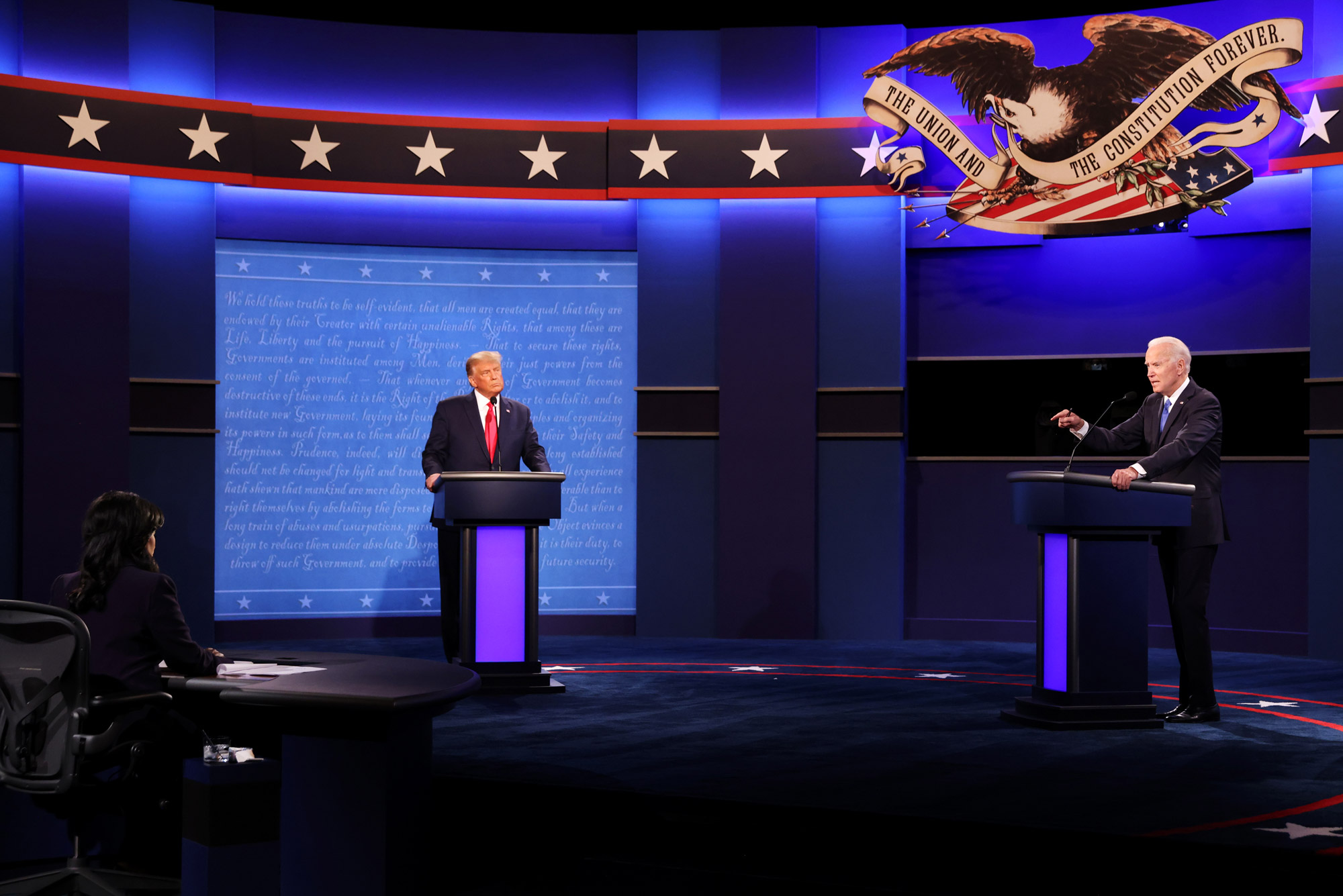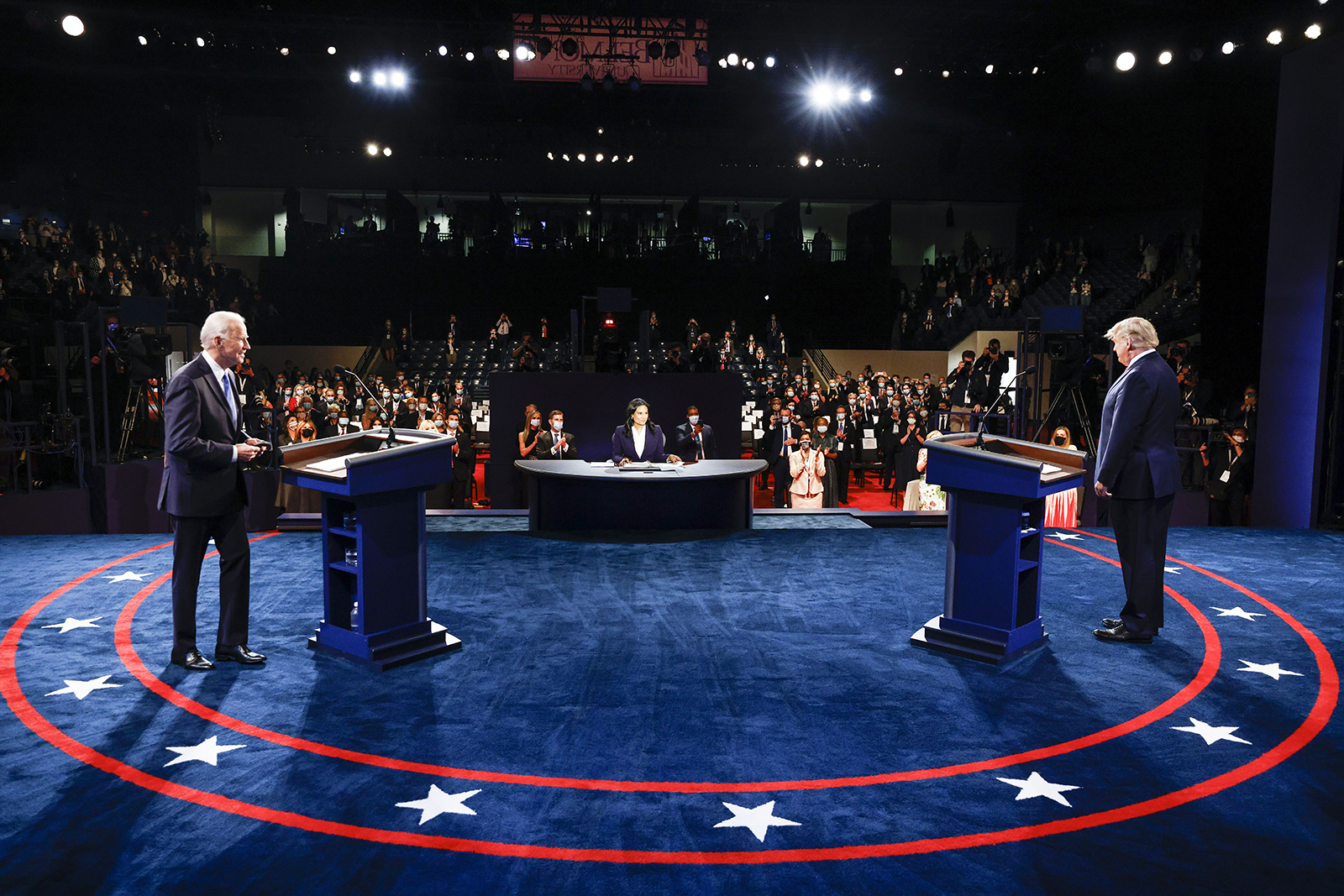Key Moments and Exchanges: Presidential Debate Thursday

Presidential debate thursday – The presidential debate on Thursday night was marked by several key moments and exchanges that shaped the overall narrative of the event. These moments highlighted the candidates’ contrasting views on various issues and provided insights into their strategies and tactics.
The presidential debate Thursday was a heated affair, with both candidates trading barbs and trying to score points. But away from the political arena, there was another battle taking place – the Indiana Fever vs Chicago Sky match. The game was a close one, with the Fever ultimately emerging victorious.
For those interested in the player stats from the match, they can find them here. Now, back to the presidential debate…
One of the most pivotal moments occurred when the candidates discussed the economy. Candidate A presented a detailed plan for economic recovery, while Candidate B criticized the plan as unrealistic and unaffordable. The exchange showcased the candidates’ differing approaches to economic policy and set the tone for the rest of the debate.
As the presidential debate Thursday night captivates the nation, let’s not forget the thrilling matchup between the Washington Mystics and Indiana Fever. For those eager to catch the game, click here to find out where to watch. After witnessing the political fireworks, tune in to see the Mystics and Fever battle it out on the court, ensuring an evening filled with both debate and athleticism.
Body Language and Delivery
During the debate, the candidates’ body language and delivery also played a significant role. Candidate A maintained a calm and composed demeanor, while Candidate B appeared more animated and aggressive. Candidate A’s measured tone and deliberate gestures conveyed a sense of authority, while Candidate B’s passionate delivery and frequent interruptions suggested a more confrontational approach.
As the presidential debate Thursday night draws near, it’s worth noting that the Indiana Fever and Washington Mystics will also face off in a highly anticipated matchup. For a closer look at the player stats from this exciting game, visit indiana fever vs washington mystics match player stats.
Then, tune in to the presidential debate for a clash of ideas that will shape our nation’s future.
The candidates’ body language and delivery had a noticeable impact on the debate. Candidate A’s composure and confidence seemed to resonate with viewers, while Candidate B’s aggression may have alienated some voters.
The upcoming presidential debate this Thursday is highly anticipated. Candidates from both sides are expected to engage in heated discussions and present their views on important issues facing the nation. To get a comprehensive understanding of the debate and its potential impact, I highly recommend checking out the article titled ” Presidential Debate This Week “.
This insightful piece delves into the key topics that will be discussed and provides expert analysis on the strategies employed by each candidate. By reading this article, you’ll be well-informed and prepared to follow the debate with a deeper understanding of the stakes involved.
Policy Positions and Differences

The two candidates running for president have distinct policy positions on a range of issues. These differences could have a significant impact on the future of the country.
One of the most significant areas of disagreement is on the economy. The Democratic candidate supports a more interventionist approach, while the Republican candidate favors a more free-market approach.
Economic Policies
- The Democratic candidate supports raising taxes on corporations and wealthy individuals, while the Republican candidate supports lowering taxes for all Americans.
- The Democratic candidate supports increasing government spending on infrastructure and social programs, while the Republican candidate supports reducing government spending and cutting regulations.
- The Democratic candidate supports a more active role for the government in regulating the economy, while the Republican candidate supports a more hands-off approach.
These differences in economic policy could have a significant impact on the future of the economy. The Democratic candidate’s policies could lead to higher taxes and more government spending, while the Republican candidate’s policies could lead to lower taxes and less government regulation.
Candidate Strategies and Tactics

The candidates in the presidential debate employed distinct strategies and tactics to convey their messages, appeal to voters, and counter their opponents’ arguments. These strategies played a crucial role in shaping the overall dynamics of the debate and influencing the perceptions of the audience.
One notable strategy was the use of personal anecdotes and relatable stories to connect with voters on an emotional level. Candidates shared experiences and struggles from their own lives, aiming to resonate with the audience and establish a sense of authenticity and empathy.
Framing the Arguments
Candidates carefully crafted their arguments and framed them in ways that aligned with their campaign messages and target voter demographics. They employed specific language, analogies, and examples to make their points accessible and persuasive to the intended audience.
- Candidate A presented their policies as a continuation of the current administration’s successful initiatives, highlighting the positive outcomes and promising further progress.
- Candidate B emphasized the need for change and presented their platform as a bold departure from the status quo, promising to address longstanding issues and tackle new challenges.
Appealing to Voters
Candidates tailored their appeals to different voter groups, recognizing the diverse perspectives and priorities within the electorate. They employed targeted messaging and emotional appeals to resonate with specific demographics, such as:
- Appealing to economic concerns by promising job creation and wage increases.
- Addressing social issues such as healthcare, education, and racial justice.
- Emphasizing national security and foreign policy stances to appeal to voters concerned about global affairs.
Countering Opponents’ Arguments, Presidential debate thursday
Candidates employed various tactics to counter their opponents’ arguments and undermine their credibility. They used logical fallacies, pointed out inconsistencies, and challenged the validity of opposing claims.
- Candidate A accused Candidate B of making unrealistic promises and lacking a clear plan to implement their policies.
- Candidate B countered by questioning Candidate A’s record in office and highlighting instances where they had failed to deliver on their commitments.
Effectiveness of Strategies
The effectiveness of the candidates’ strategies and tactics varied depending on the specific context and audience. Some strategies resonated well with certain voter groups while falling flat with others. The debate performance also influenced the perception of the candidates’ competence, trustworthiness, and electability.
While the presidential debate on Thursday is sure to be a hot topic, don’t forget to cast your vote for the WNBA All-Star Voting. The game features the league’s top players and is always an exciting event. After you’ve voted for your favorite WNBA stars, tune in for the presidential debate on Thursday to hear the candidates’ views on the issues that matter most to you.